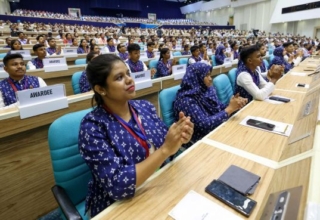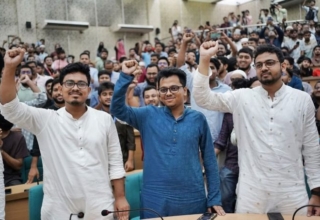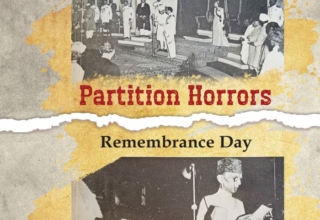

Between September 7 and 8, Chandrayaan 2 mission, almost became a cult. Quite unprecedentedly, science or space science bonded and inspired a 1.25 billion people nation as never before. The soft landing of the lander, Vikram, with a rover (Pragyan) in its womb, was watched and followed much like a immersive high drama suspense movie where you’re not sure of the next moment, not only in India but across the globe. In the end just before 2.1 Km from lunar surface, the ISRO ground station lost communication with the lander and it broke a billion hearts. But then, the mission is still an achievement of sorts with a 95% success.
A Google searches report says that the mission generated as much interest in neighboring Pakistan as in India. Pakistan minister for science and technology, Chaudhry Fawad Hussain, who mocked India for the mission failure, was at the receiving end even from people of his own country as he had no inclination or understanding of what the mission meant and what is its achievement even in the ‘failure.’
The media hype especially with the presence of Prime Minister Narendra Modi at ISRO during the night of final landing phase and the emotional moments of chairman Dr K Sivan, when he like any human would, broke down at the lost communication with the lander—all turned Chandrayaan 2 into a folklore story of adventure of science, emotions, solidarity and national pride.
While the story of 12 years journey of Chandrayaan 2 mission is no less inspiring in itself, the finale has left a deep impression on the young minds. The mission commenced in 2007 and was planned in collaboration with Russian agency, ROSCOSMOS. However a after a few years, with failure of ROSCOSMOS’s Fobos-Grunt mission to Mars, ISRO chartered its own independent path and turned the mission completely indigenous. So, desi technology prowess and space capability of country built painstakingly over so many years at a cost of Rs 978 Cr was also on test in a way and most of it was proven right against benchmarks.
With this mission, the physics of projectile motion, mathematics and a host of technologies that are part of space sciences, have fired the imagination of children and given them a reason to pursue STEM as never before. Scientists have become icons and role models and a career path has illuminated more avenues in the mindscape of millions of children not only in India but places like Pakistan as well. There has been more opinion in favor of impetus to science education or its need than berating of the mission by most Paki commentators.
Moon is a frontier; the science has to overcome eventually. For this experimentation, exploration and effort is continuing and will go on. From minerals requirement to even human settlements, lunar surface will have to offer a solution to dwindling resources on earth. And for space science itself the challenge of surmounting moon is just part of its natural advancement and infinite journey. And, future human generations will continue to experience the thrill, emotion and challenge to push the frontiers till we confront life outside the planet earth, may be!










